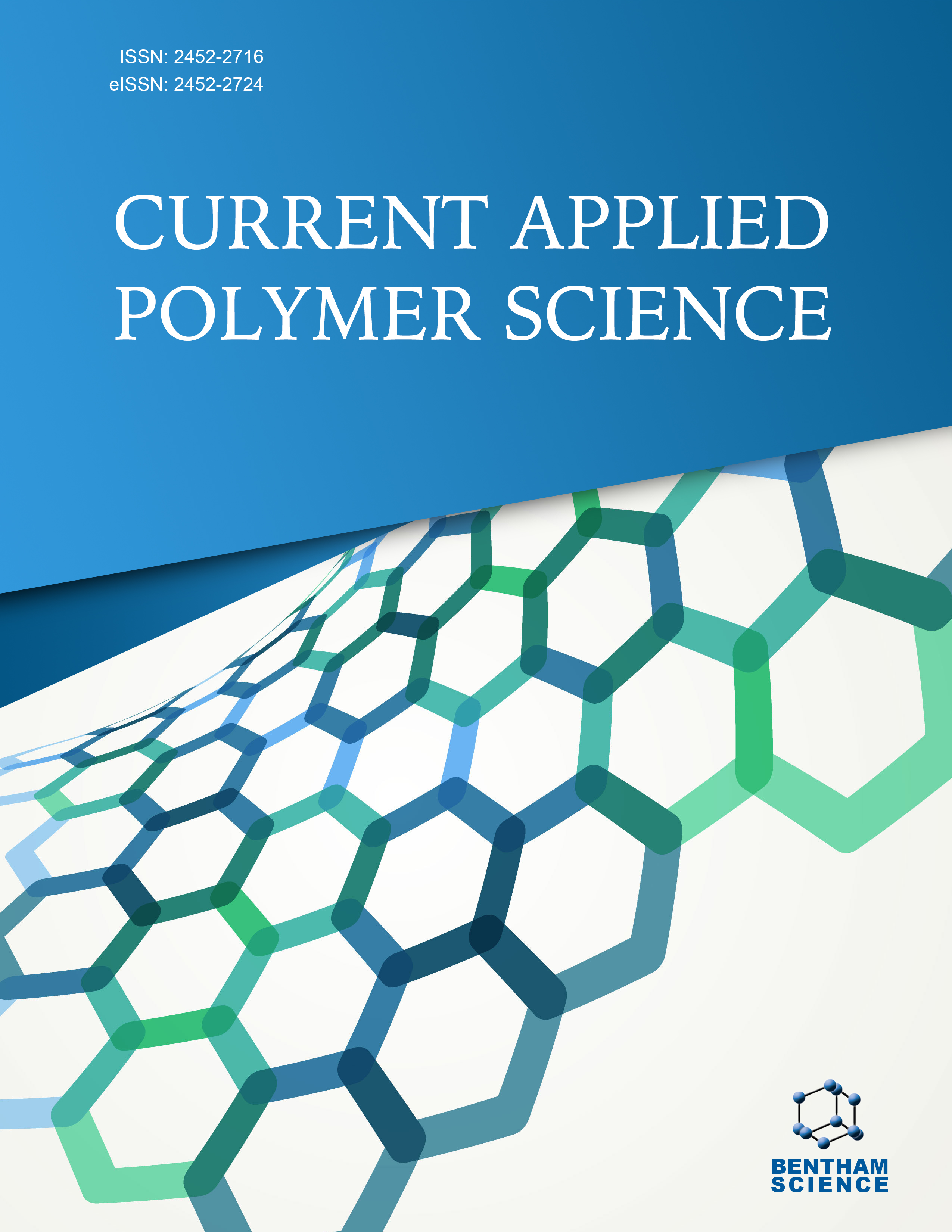- Home
- A-Z Publications
- Current Applied Polymer Science
- Previous Issues
- Volume 5, Issue 1, 2022
Current Applied Polymer Science - Volume 5, Issue 1, 2022
Volume 5, Issue 1, 2022
-
-
Advances in Magnetic Polymeric Styrene-divinylbenzene Nanocomposites between Magnetite and Maghemite Nanoparticles: An Overview
More LessSuperparamagnetic nanoparticles, such as magnetite (Fe3O4) and maghemite (γ-Fe2O3), have been used to produce magnetic nanocomposites with several polymeric matrices including magnetic styrene-divinylbenzene nanocomposites. Through the incorporation of these nanoparticles, the nanocomposite presents superparamagnetism, low coercivity, and high magnetic susceptibility. Due to these features, magnetic nanom Read More
-
-
-
Poly[vinylidene difluoride] [PVDF] Nanofibrous Web-Based Piezoelectric Material: A Futuristic Solution for Flexible Piezoelectric Energy Harvester
More LessAuthors: Swagata Banerjee, Satyaranjan Bairagi, Mohammad Shahadat and S. Wazed AliPiezoelectric materials are gradually becoming attractive materials for research as far as energy harvesting technologies are concerned. The piezoelectric effect is a pressure-driven phenomenon that is exhibited by various kinds of crystals, ceramics, polymers, and composites. However, polymers are preferred in piezoelectric applications owing to their flexibility and lightweight. They can easily be incorporated into electro Read More
-
-
-
Formulation and Evaluation of Tramadol HCL Pectin Coated Chitosan LDH Bionanocomposite Beads for Colon Drug Delivery System
More LessBackground: Tramadol HCl (TH) is a centrally acting analgesic that is used to treat moderate to severe pain intestinal disorders. Its use is limited orally due to instability. Objective: The study aims to develop TH Pectin-coated chitosan LDH bionanocomposite beads for colon targeting. Methods: LDH-TH intercalation was done by precipitation reaction and it was used to prepare bionanocomposite beads of TH. The developed bead Read More
-
-
-
Comparison of Methodologies for Selection of Bone Cements for Orthopaedic Surgical Procedures
More LessBackground: Poly (methyl methacrylate) (PMMA) bone cement is widely used in orthopaedic procedures of vertebroplasty (VP) balloon kyphoplasty (BKP) and cemented total joint arthroplasty (TJA). While only very few PMMA bone cement brands are approved (by the appropriate regulatory authority) for VP and BKP, many are approved for cemented TJA. Selection of cement for these applications must be done considering a Read More
-
-
-
Measured and Calculated Expansion of Polystyrene Beads Comprising Four Blowing Agents in Hot Silicone Bath and in Water Vapor as Well as in Extrusion for Boards
More LessBackground: The published models were sophisticated and described the expansion in dependence on time only in the first stage. The object was to explain the discrepancy between foaming under pressure release XPS and foaming by heat supply EPS by model calculations. Methods: The rate of expansion of small samples comprising blowing agent and polystyrene was measured by buoyancy in a silicone bath at 110 °C and that Read More
-
-
-
Structure, Stability, and Electronic Feature Analyses of Substrates (Methyl Orange and Vanadium Oxide)-Surfactant (Triton X-100) Complex: A Computational Insight
More LessAims: The objective of the present work is to understand the structural stability (i.e., H-bonding and other weak noncovalent interactions) and electronic features of new model substrates, such as methyl orange (MO), vanadium oxide (V), surfactants as Triton-X100 (TX-100), and their allied substrate-surfactant model complexes (MO-V, MO-TX100, V-TX100, and (MO-V)-X100) with the deployment of density functional theory ( Read More
-
-
-
Rubbery Polyhydroxyesters based on Polyethylene Glycol Diglycidyl Ether: Reaction and Vitrimer-like Behavior Catalyzed by Tin Octoate
More LessAuthors: Rodrigo H. Cunha, Marcio Nele, Marcos L. Dias and R. CunhaBackground: Polyhydroxyesters prepared from epoxy and organic acids are vitrimers that can rearrange their topology from exchange reactions enhanced by catalysts, forming crosslinked networks that can be deformed and remolded. Objectives: In this work, the curing kinetics and thermal properties of polyhydroxyesters vitrimers based on polyethylene glycol diglycidyl ether (PEGDGE), citric acid (CA), and sebacic acid (SA) i Read More
-
Volumes & issues
Most Read This Month
Article
content/journals/caps
Journal
10
5
false
en


